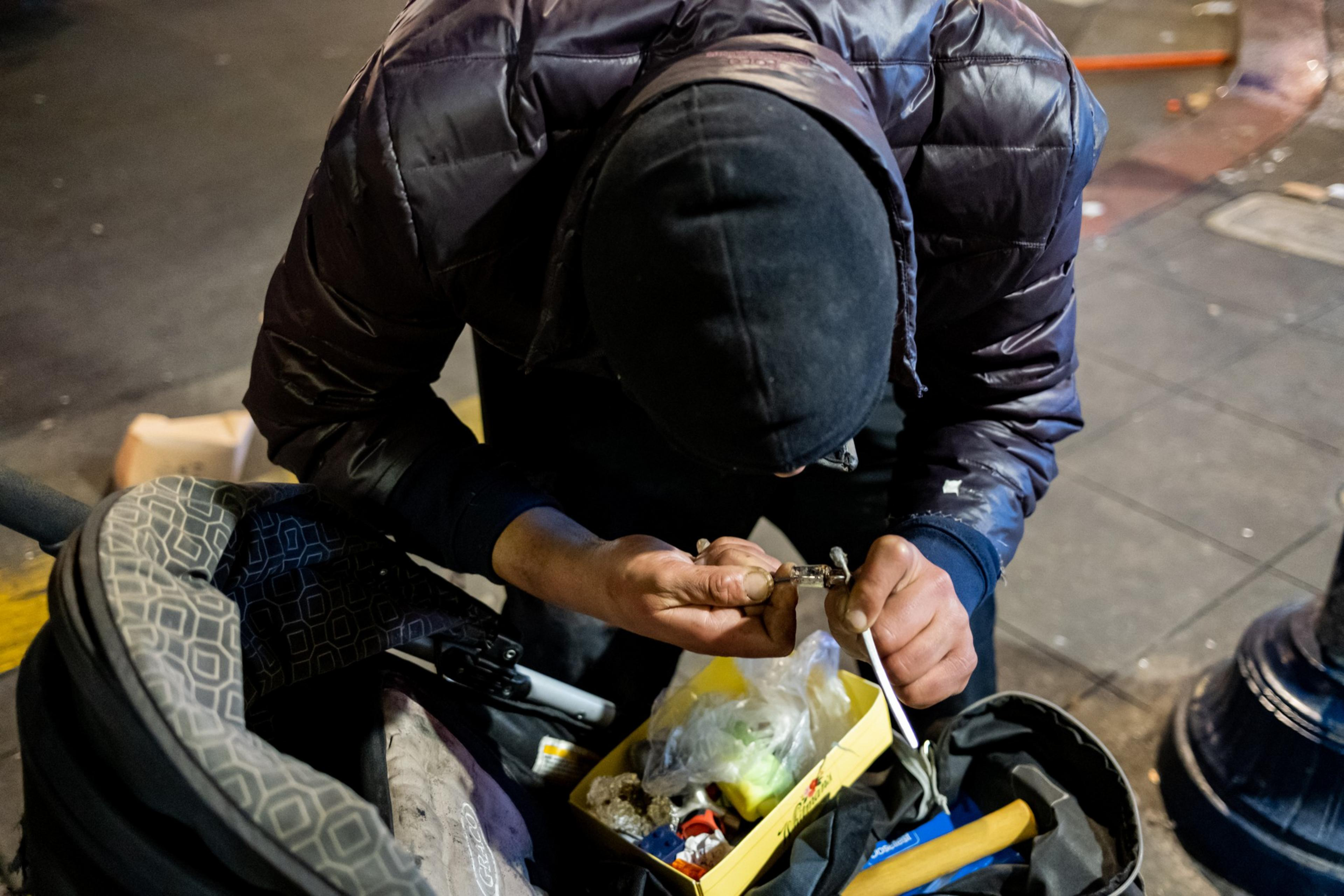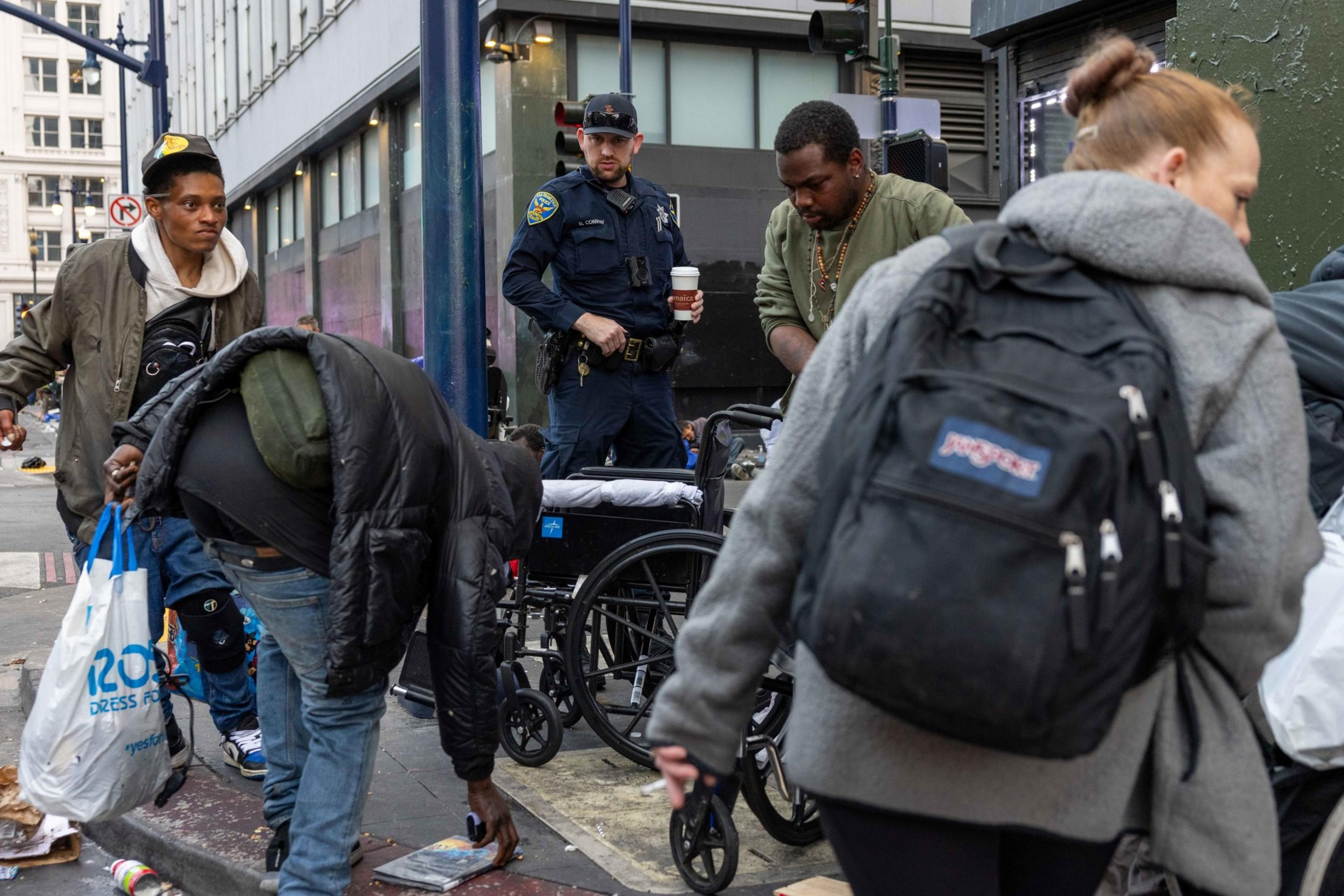It was strangely quiet on Sixth Street on the night of Oct. 16.
On corners long plagued by drug use and sales, police stood watch, their cars stationed on both sides of Market Street long after midnight. Drug users were scattered through the narrow side streets. But the usual crowd of dealers, and the chaos that typically accompanies them, was notably absent. It appeared the city was employing a new strategy and that it had been successful in displacing much of the drug activity from its most blighted street.
Just a week later, early in the morning of Oct. 23, the scene was back to its usual state. A hundred drug users and dealers filled the corner of Golden Gate Avenue and Market Street. Dealers operated in clear view as cops sped through to nearby calls, and officers paid little mind to the group as it overflowed into the street.
What changed? Dreamforce was over.
The annual Dreamforce convention convened by the city’s largest private employer, Salesforce, brought 50,000 tech workers and accompanying police reinforcements to the city’s most troubled blocks from Oct. 14 to 16. But according to outreach workers, San Francisco police, and The Standard’s own on-the-ground reporting, that enforcement, like the convention-goers, was just temporary.
Dreamforce was widely hailed as a success, with SFPD calling it “one of the safest events on record.” But the brief crackdown echoed a familiar pattern in San Francisco: the city’s ability to marshal resources when the spotlight is on, only for its most persistent problems to return once it fades.
“They’re just playing a game of cat and mouse,” said Billy, who was using fentanyl on Market Street Wednesday night. “It’s not going to just go away.”
While police raced past the drug market to a nearby call in the small hours of Thursday morning, pandemonium ensued at the corner of Golden Gate and Market. Just after midnight, a drug dealer laid his scale on the ground to weigh out a portion of fentanyl as one of his customers started to overdose.
The middle-aged fentanyl user convulsed on the sidewalk of Golden Gate Avenue, his legs shaking as his face turned pale, then blue. His friends rushed around him, rubbing his sternum and calling out for help. But the crowd urged them not to dial 911 and invite the attention of first responders. A block away, at least nine police officers and several paramedics were responding to an apparent altercation between two women.

The dealer, who had been crouched behind a man in a wheelchair a few feet away, put his scale back in his pocket. He laughed and then disappeared into the crowd.
Over the past two years, police have smothered the city’s open-air drug markets during the day, counting more than 7,500 drug-related arrests. But at night, those efforts taper off sharply. As a result, late-night businesses on Sixth Street have struggled and some neighborhood leaders are losing hope in the city’s strategy.
“I don’t quite understand why this situation is allowed to continue,” said Randy Shaw, executive director of the Tenderloin Housing Clinic. “The crowds are enormous.… It should not be tolerated.”
In a statement, the San Francisco Police Department confirmed that additional resources were allocated during the Dreamforce convention and said that “surging officers” is one tactic in dismantling the drug markets. A department spokesperson defended the city’s record on enforcing drug-related crimes and touted this year’s increase in police staffing.
“We are working relentlessly with our city, state, and federal law enforcement partners to address all the challenges of the fentanyl crisis,” a spokesperson for the department said. “While we have seen major progress, we still have work to do, and the SFPD is committed to doing this work for as long as it takes.”
The man who overdosed on Golden Gate Avenue eventually regained consciousness, thanks to the help of a man wearing only sweatpants and a durag, who turned him on his side and administered the opioid antidote Narcan. The crowd wasted no time in resuming its usual routine.
Shortly after, a police car drove by slowly and flashed its high beams. The man in the sweatpants approached the vehicle with his arms raised.
“You can never kill me,” he shouted at the police. “I will never die.”
The officers didn’t stop.
